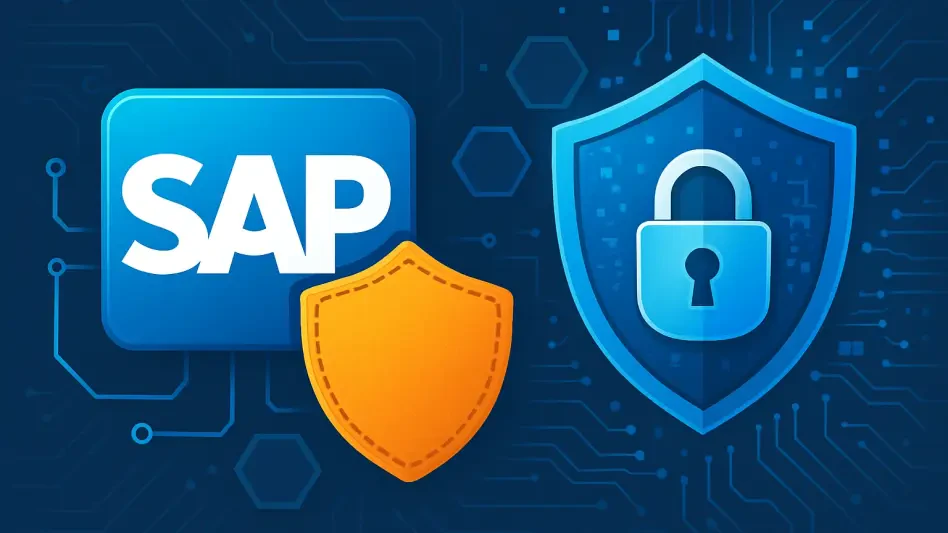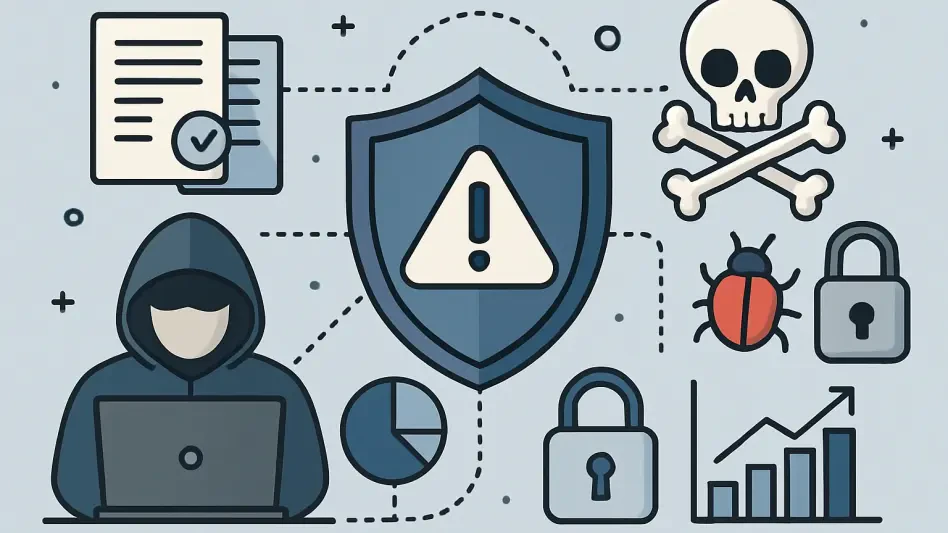In an era where cyber threats evolve at an unprecedented pace, a critical vulnerability in one of the world’s most widely used enterprise software platforms has sent shockwaves through the business and IT communities, demanding immediate attention. SAP, a global leader in enterprise resource planning systems, has recently issued an emergency patch to address a severe flaw in its Solution Manager component, which could potentially allow attackers to take complete control of affected systems. Identified as CVE-2025-42887, this vulnerability exposes organizations to significant risks, including unauthorized code execution by unauthenticated attackers. With businesses relying heavily on SAP for managing critical operations, the urgency to apply this patch cannot be overstated. This development underscores the ever-present need for robust cybersecurity measures in an increasingly digital landscape, where a single flaw can compromise entire infrastructures. As threats continue to mount, understanding the implications of such vulnerabilities is essential for safeguarding sensitive data and maintaining operational integrity.
1. Understanding the Solution Manager Vulnerability
The vulnerability in SAP Solution Manager, tagged as CVE-2025-42887, originates from an unsanitized remote-enabled function module, creating a dangerous entry point for malicious actors. This flaw enables unauthenticated attackers to inject and execute arbitrary code, effectively granting them the ability to seize control of the central management hub that oversees critical business processes. Such a breach could disrupt operations, compromise sensitive data, and lead to cascading failures across interconnected systems. The severity of this issue lies in its potential to affect organizations globally, given the widespread adoption of SAP software in industries ranging from finance to manufacturing. Immediate attention to this flaw is crucial, as exploitation could result in significant financial losses and reputational damage. IT teams must prioritize identifying whether their systems are exposed to this risk, ensuring that no stone is left unturned in the effort to secure their environments against this potent threat.
Beyond the technical details, the broader implications of this vulnerability highlight a pressing concern for enterprise security. The ability of attackers to bypass authentication mechanisms underscores the importance of stringent access controls and continuous monitoring. Many organizations may not even be aware of the extent to which their SAP systems are integrated into daily operations, making this flaw particularly insidious. A successful exploit could provide attackers with a foothold to manipulate business processes, steal proprietary information, or deploy ransomware. The urgency to address this issue is amplified by the sophisticated nature of modern cyber threats, where attackers often operate with speed and precision. Businesses must act swiftly to assess their exposure, leveraging diagnostic tools and security audits to uncover potential weaknesses. This situation serves as a stark reminder that even the most established software platforms are not immune to critical vulnerabilities, necessitating a proactive approach to cybersecurity.
2. Actions to Mitigate the Risk
Responding to this critical flaw requires immediate and decisive action from organizations using SAP Solution Manager. The first step is to apply the latest emergency patch released by SAP, which directly addresses the vulnerability and closes the loophole exploited by attackers. Beyond patching, it is imperative to restrict access to Solution Manager, ensuring that only authorized personnel can interact with the system. Implementing robust monitoring mechanisms to detect anomalies in real-time can also help identify potential exploitation attempts before they escalate into full-blown breaches. Regularly auditing user accounts and system configurations adds another layer of defense, minimizing the risk of unauthorized access. These combined measures form a comprehensive strategy to protect against the immediate threat posed by this vulnerability, while also fortifying systems against future risks. Delaying these actions could leave organizations exposed to severe consequences, making prompt implementation a top priority.
In addition to technical safeguards, fostering a culture of cybersecurity awareness within an organization is equally vital. Employees at all levels should be educated on the importance of adhering to security protocols and recognizing suspicious activities that could indicate a breach. Conducting routine training sessions can equip staff with the knowledge to avoid common pitfalls, such as falling for phishing attempts that might provide attackers with initial access to systems. Furthermore, establishing clear incident response plans ensures that any potential exploitation of vulnerabilities like CVE-2025-42887 can be addressed swiftly and effectively. Collaboration between IT departments and executive leadership is essential to allocate resources for ongoing security improvements. By integrating these practices into daily operations, businesses can create a resilient defense against not only the current SAP flaw but also the evolving landscape of cyber threats. This holistic approach underscores the need for vigilance in an era where digital risks are ever-present.
3. Broader Implications for Enterprise Security
The emergence of this SAP vulnerability serves as a critical wake-up call for enterprises worldwide, emphasizing the fragility of even the most trusted software platforms. It highlights the reality that no system is entirely immune to flaws, and the consequences of exploitation can ripple across entire industries. Organizations must recognize that reliance on complex systems like SAP, while essential for operational efficiency, also introduces significant risks that require constant attention. This incident prompts a reevaluation of how businesses approach software security, pushing for more rigorous testing and validation processes during development and deployment. The potential for attackers to exploit such flaws undetected for extended periods raises questions about the adequacy of current cybersecurity frameworks. As digital transformation accelerates, ensuring the integrity of enterprise systems becomes a paramount concern, demanding innovative solutions to stay ahead of increasingly sophisticated threats.
Moreover, this situation underscores the importance of collaboration between software vendors and their clients in addressing security challenges. Vendors like SAP play a crucial role in promptly identifying and patching vulnerabilities, but organizations must also take responsibility for maintaining up-to-date systems and implementing recommended safeguards. Establishing strong partnerships with technology providers can facilitate faster communication and response times when critical issues arise. Additionally, investing in advanced threat detection tools and services can enhance an organization’s ability to anticipate and mitigate risks before they materialize into major incidents. The broader lesson from this vulnerability is the need for a proactive mindset, where security is treated as an ongoing process rather than a one-time fix. By learning from such events, businesses can better prepare for future challenges, ensuring that their digital assets remain protected in an unpredictable threat landscape.
4. Looking Ahead: Strengthening Defenses
Reflecting on the response to this critical SAP flaw, it becomes evident that swift action by both the vendor and affected organizations played a pivotal role in limiting potential damage. The emergency patch was deployed with urgency, while many businesses took immediate steps to secure their systems through access controls and monitoring. These efforts marked a significant stride in containing the threat posed by CVE-2025-42887, demonstrating the value of rapid response mechanisms in cybersecurity.
Looking forward, organizations must build on this momentum by adopting a forward-thinking approach to security. Investing in regular system updates and vulnerability assessments can prevent similar incidents from catching businesses off guard. Exploring emerging technologies, such as automated threat detection and response systems, offers a promising avenue to bolster defenses. Additionally, fostering industry-wide collaboration to share threat intelligence can help anticipate and neutralize risks more effectively. By prioritizing these strategies, enterprises can transform past challenges into opportunities for creating a more secure digital future.








